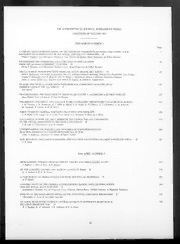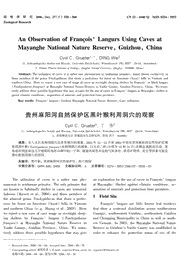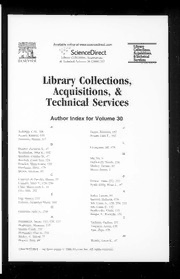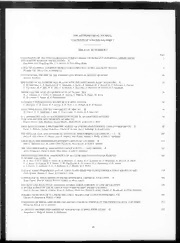
In search of a Hagedorn transition in SU(N) lattice gauge theories at large-N PDF
Preview In search of a Hagedorn transition in SU(N) lattice gauge theories at large-N
In search of a Hagedorn transition in SU(N) lattice gauge theories at large–N Barak Bringoltz and Michael Teper Rudolf Peierls Centre for Theoretical Physics, 6 0 University of Oxford, 0 1 Keble Road, Oxford, OX1 3NP, UK 2 n a J 1 3 Abstract 2 v We investigate on the lattice the metastable confined phase above Tc in SU(N) gauge theories, 1 for N = 8,10, and 12. In particular we focus on the decrease with the temperature of the mass of 2 0 thelighteststatethatcouplestoPolyakov loops. WefindthatatT = Tc thecorrespondingeffective 8 string tension σeff(T) is approximately half its value at T = 0, and that as we increase T beyond 0 5 Tc, while remaining in the confined phase, σeff(T) continues to decrease. We extrapolate σeff(T) 0 to even higher temperatures, and interpret the temperature where it vanishes as the Hagedorn / t temperature T . For SU(12) we find that T /T = 1.116(9), when we use the exponent of the a H H c l three-dimensional XY model for the extrapolation, which seems to be slightly preferred over a - p mean-field exponent by our data. e h : PACS numbers: 11.15.Ha,11.15.Pg,11.25.Tq v i X r a 1 I. INTRODUCTION In the large–N limit the confined phase of the SU(N) gauge theory becomes weakly interacting and relatively simpler [1, 2]. Moreover, some of its features can be described by a low energy effective string theory (for example see [3]). The link between gauge theo- ries and string theories was strengthened with the conjectured AdS/CFT dualities between supersymmetric Yang-Mills theories in the large–N limit and gravity models (for a review see [4]). An interesting element of systems with stringy properties is the occurrence of an ultimate temperature, above which the free string description is unsuitable. In string models for QCD (or pure gauge theory), this temperature is naturally identified with a ‘Hagedorn’ deconfinement transition. The earliest evidence for theexistence ofa finite temperature phase transition inhadronic physics was obtained by Hagedorn in [5]. There, he assumed that hadronic states with mass m , referred to as “fireballs”, are compound systems of other fireballs. This can be → ∞ statedmathematically bya self-consistent relationthat thedensity ofstates ρ(E) must obey, andthatresultsinanexponentialgrowthofρwiththeenergyE. Animmediateconsequence is that there exists a temperature T , above which the partition function diverges: as H T T , the Boltzmann suppression of states exp( E/T) is overwhelmed by the density → H− ∝ − of states, ρ(E) exp(+cE). At this T an increase of the system’s energy is met with an ∝ increase in the number of particles. In the bootstrap dynamical framework, which predated the discovery of QCD and the idea that hadrons are confined bound states of quarks and gluons, T represents an ultimate temperature beyond which matter cannot be heated. In H the more appropriate language of QCD, once we are close enough to T for these fireballs H to be densely packed, the underlying quark and gluon degrees become liberated from their ‘hadronic bags’ and we expect to see a deconfinement transition [6]. A simple, intuitive, and general analogue of the above argument [7, 8] in the context of any linearly confining theory is as follows. In such a theory the energy of a string of length l between two distant static sources a distance r < l apart, obeys E(l;r) σl, (1.1) ≃ where σ is the confining string tension and we neglect subleading terms. For a string (or for a long enough flux tube) it is easy to see that once l r the number of different states of ≫ the string grows exponentially with l, n(l) exp(cl), up to power factors, with c determined ∝ by the dynamics and dimensionality. On the other hand the probability of such a string with l r is suppressed by a Boltzmann factor, exp( E(l)/T). The total probability of ≫ ∝ − such a string is given by the free energy that combines the two factors to define an effective string tension σeff(T): exp[(c σ/T) l] exp( σeff(T)l/T). (1.2) ∝ − · ≡ − It is thus clear that as T T σ/c, arbitrarily long loops will be thermally excited and H → ≡ the effective string tension vanishes, σeff T→TH 0. Because of this vanishing energy, and other −→ features of the free energy [6], one would naturally expect this deconfining phase transition to be second order. We can give a parallel argument for the partition function itself. Consider an SU(N) gauge theory in which the confining energy eigenstates are composed of glueballs. A model for glueballs is to construct them from closed loops of (fundamental) flux. For the lightest 2 glueballs this loop will be small, and given that the width of the flux tube is O(1/√σ), it does not make much sense to think of a distinct closed loop of flux. However in the sector of highly excited glueballs, the loop will be very long and the presence of such states becomes compelling. For a state composed of a flux loop of length l, the energy is E σl. What is ∼ the number density, n (E), of such states? Such highly excited states have large quantum G numbers and in this limit a classical counting of states is justified. Thus the number of these states equals the number of closed loops of length l, i.e. n (E) exp(cl) up to subleading G ∝ factors, with the scale c identical to the one in Eq. (1.2). Thus the partition function will have a Hagedorn divergence as T T where T is identical to the string condensation H H → temperature of the previous paragraph. Since we expect c √σ, we expect the Hagedorn transition to occur at T = σ/c √σ. H ∼ ∼ Ontheotherhandthelightestglueball(ascalar)satisfiesm 3.5√σ whilethenextlightest G ≃ glueball (a tensor) satisfies m 4.8√σ. Thus one has the somewhat counterintuitive G ≃ picture that as T T the lightest glueballs are not thermally excited. Rather it is the H → highly excited glueballs, whose density of states grows exponentially with their mass, that drive the transition. In the above scenarios, as T T the vacuum becomes increasingly densely packed with H → the thermally excited states. These will at some point start to interact and the idealised arguments we use necessarily break down as T approaches T . We note that as N for H → ∞ SU(N) gauge theories (or QCD), interactions between colour singlet states vanish. Thus it is in this limit that the argument for a Hagedorn transition becomes most compelling. The vanishing of σeff, and the divergence of the associated correlation length, suggests that this Hagedorn transition is second order. To what universality class might it belong? The high temperature phase has a nonzero vacuum expectation value for the complex valued Polyakov lines that wind around the Euclidean temporal torus. This spontaneously breaks the global Z symmetry of the theory. Using universality arguments one can then predict N the critical exponents of the transition [9]. In particular, in three spatial dimensions it belongs to the universality classes of the three-dimensional Ising and XY models for N = 2 and N 4 (for N = 3, there is no known universality class) [10]. Finally for N = there ≥ ∞ are studies that predict mean-field behaviour for the correlation length [11]. This can be understood as a suppression of the critical region by powers of 1/N (see for example the discussion in [12], and references therein). The study in [13] also gives mean-field scaling, however only because infrared divergences are not seen at the small volume discussed there [14]. The above discussion has so far ignored the contribution to the partition function that comes from nonconfined energy eigenstates containing a finite density of gluons. While such 2 states will be irrelevant at low T, the fact that their entropy grows as N while the entropy of confined states is at most weakly dependent on N, means that for large enough N there must be some T where their free energy will decrease below that of the confined sector of states. At this point there will be a phase transition to a (perhaps strongly interacting) ‘gluon plasma’, which one would naturally expect to be first order. Indeed it turns out to be the case that in four dimensions SU(N) gauge theories go through a first order deconfining transition for N 3 [15]. (See also the latent heat calculation at large-N on a symmetric ≥ lattice [16].) For SU(2) the transition is second order, but it is not clear if it is a Hagedorn transition. The fact that it is at small rather than large N makes the case weaker. As does the fact that the SU(2) value of T /√σ lies on the curve that interpolates through the c N 3 values [15]. On the other hand the value of T /√σ does coincide with the string c ≥ 3 condensation temperature of the simple Nambu-Goto string theory (see below). The fact that for N 3 the first order deconfining transition occurs for T < T , would c H ≥ appear to render the Hagedorn transition inaccessible. However the deconfining transition is strongly first order at larger N, and so one can try to use its metastability to carry out calculations in the confining phase for T > T . If T is not far away, one can then hope c H to calculate σeff(T) over a range of T where it decreases sufficiently that an extrapolation to σeff(TH) = 0 can be attempted. In the range of N accessible to us, the interface tension between confined and deconfined phases increases with N faster than the latent heat, and this makes the metastability region larger [17] as N grows. Thus such a strategy has some chance of success, and it is what we shall attempt in this paper. Our strategy is therefore to begin deep enough in the confined phase and then to increase the temperature to temperatures T > Tc, calculating the decrease in σeff(T), and extrapo- lating to σeff = 0. We interpret the result of the extrapolation as the Hagedorn temperature, T . Nevertheless, since we work with finite values of N and volume V, tunneling probably H occurs somewhere below TH. These tunneling effects and the fact that as σeff decreases finite volume effects become important, can make an apriori fit for the functional form of σeff(T) unreliable. As a result we first perform fits where we fix the functional behaviour to be m σeff/T T→TH (TH/Tc T/Tc)ν . (1.3) ≡ ∼ − where ν = 0.6715(3) corresponding to 3D XY [18] or ν = 0.5 corresponding to mean field. The reason for these two choices is motivated by two conceivable ways in which the low energy effective loop potential can behave (see below). In addition we also perform fits where the exponent ν is a free parameter, constrained to the range [0,1], and find it to be especially useful for SU(12). The coefficient A is fitted as well. An additional outcome of this work is to confirm that at T = T the mass of the timelike flux loop that couples to c Polyakov loops is far from zero at large-N, which confirms that the transition is strongly first-order. To make this point clear we will present figures of the effective string tension in units of the zero temperature string tension σ. As a function of T, it should have the following behavior. σeff/σ T→=TH A T/Tc (TH/Tc T/Tc)ν , (1.4) · · − If we imagine the effective potential for an order parameter such as the Polyakov loop, Veff(lp), then at T = Tc this will possess degenerate minima corresponding to the confined and deconfined phases. These will be separated by a barrier whose height is expected to be 2 O(N ) at large N. As we increase T the confined minimum rises relative to the deconfined one(s). As T T we expect the second derivative at the confining minimum to go to zero, H → corresponding to σeff 0. The simplest possibility is that at this T the confining minimum → completely disappears, i.e. that this corresponds to a spinodal point of the potential. In a string model ofglueballs where the glueballis composed oftwo ‘constituent’ gluonsjoinedby an adjoint flux tube, string condensation would correspond to the explicit release of a gluon plasma simultaneously throughout space and the identification of the Hagedorn transition with a spinodal point would be compelling. This is less clear in the closed flux loop model. (Whether the increasing stability ofthe adjoint string asN allows us to use theadjoint → ∞ string model for the highly excited states relevant near T also needs consideration.) If this H Hagedorn transition-spinodal point identification is indeed correct, then in the vicinity of l 0, the effective loop potential looks like that of a Gaussian model, and ν = 0.5 is p ≃ expected. A model for this behaviour is in [13], where because of the infinitesimal volume, 4 any infra-red divergences are excluded, and one has mean-field scaling close to T , which H also implies ν = 0.5. In principle it seems quite possible that T does not coincide with the spinodal transition H temperature, T . The temperature T is a natural concept if one has a good description of s H the confined phase as an effective string theory. The latter will have O(1/N) interactions, and thus to leading order, lead to a Hagedorn behaviour at a certain temperature T . On H the contrary, T most probably encodes information on the gluonic deconfined phase, which s might not be contained in the string theory. Without any other information in the spirit of the calculations [13], that identifies T = T , these two temperatures may be different. H s If T < T then our method for identifying T remains valid. In that case one may write H s H downaLandau-GinzburgtheorythathasasecondorderHagedorntransitionatT ,fromthe H confinedvacuum,C,toadeconfinedone,D1. ThishappensatTH > Tc,wherebothC,D1are metastable, and another deconfined vacuum D2 is stable. At large-N, the metastability may be strong enough such that this embedded second order phase transition happens without being sensitive to tunnelings into the real vacuum. In this case, the fixed point that controls the critical behavior of the transition is that of the 3D XY model. Nonetheless, to see this nontrivial critical behavior one must be very close to T . This happens because interactions H 2 between the Polyakov loops are O(1/N ) suppressed, and taking the N = limit before ∞ T T results in a Gaussian model and to ν = 0.5. To see the scaling behavior of the H → 3DXY model, one needs to take T T together with N . In other words, the critical H → → ∞ region of this second order transition has a width that shrinks with increasing N [12]. To see 4 this we can examine the renormalization of the λ l interaction in the Landau-Ginzburg- p | | Wilson effective action of the transition. As usual, λ gets renormalized by infra-red (IR) 2 2 modes, and in three spatial dimensions it gets a contribution of O(λ /m). Since λ 1/N , 2 2 ∼ this becomes significant only if m 1/N . Using m (T T), this means that the IR H modes drive the system to the 3DX∼Y universality class∼only if−(T T) < 1/N4. Outside of H − ∼ this regime the correlation length has the MF scaling ν = 0.5. Finally, in the case of T > T then the spinodal transition may (but need not) interfere H s with our determination of T . This is a significant ambiguity that we cannot resolve in the H present calculations but the reader should be aware of its existence. We finish by listing some of the reasons that motivate our study. First it gives nonpertur- bative information about the free energy as a function of the Polyakov loop. While the value of T tells us when the ordered and disordered minima have the same free energy, the func- c tion σeff(T) indicates how the curvature of the free energy at the confining vacuum changes with T and its vanishing may indicate the point at which the confining vacuum becomes completely unstable. This information can serve to constrain the form of the potential in effective models for the Polyakov loops (like those in [11], for example). Second, this study is a first attempt to investigate the validity of nonzero temperature mean-field theory techniques of large–N lattice gauge theories in the continuum. A related study [19] in the strong-coupling limit saw that mean-field theory predictions at finite temperature are simply incorrect, which is consistent with the fact that the large–N limit of these strongly-coupled fermionic systems is mapped to classical systems at finite temperature, whose universality class is not mean-field [12]. It is of prime interest to know if the same happens in the contin- uumlimit of thepuregaugetheory, which we aremuch closer to. The Hagedorntemperature T can also give an estimate of the central charge of a possible underlying string theory [20], H and finally it is interesting to know what is the limit of T /T when N . This limit H c → ∞ should be larger than 1, given that the deconfining phase transition has been shown to be 5 first order at 3 N 8 [15]. It is however possible that T /T is close to 1 and perhaps H c ≤ ≤ decreasing with N which opens up interesting new possibilities in the N = limit. ∞ II. LATTICE CALCULATION 3 We work on a lattice with L L sites, where L is the lattice extent in the Euclidean s × t t time direction. The partition function is give by Z = DU exp( SW), (2.1) Z − where SW is the Wilson action given by 1 SW = β 1 ReTrUP . (2.2) (cid:20) − N (cid:21) XP 2 2 Here β = 2N /λ, and λ = g N is the ’t Hooft coupling, kept fixed in the large–N limit. P is a lattice plaquette index, and U is the plaquette variable given by multiplying link P variables along the circumference of a fundamental plaquette. Simulations are done using the Kennedy-Pendleton heat bath algorithm for the link updates, followed by five over- relaxations. We focus on the measurement of the correlations of Polyakov lines, which are taken every five sweeps. The Monte-carlo simulations were done using two different methods, which for conve- nience we refer to as method “A” and method “B”. In both, the calculation was initialized with a field configuration at the lowest value of β which was preceded by at least 3000 ther- malization sweeps from a cold start. Then, in method B, to reduce thermalization effects, each value of β was simulated beginning from the previous one. In contrast, in method A, more than one simulation began from the same β. This serves to eliminate the dependence 1 between different simulations . We choose to use method A and method B for N = 8 and N = 12 respectively. In the case of N = 10 we used both methods, and could compare between them. In Tables I-II, where we present results obtained with method A, we give the initial configurations for each value of β, along with the statistics of the study. The number of thermalization sweeps for N = 8,10 for each value of β was always at least 3000. As mentioned, the SU(12) calculations were done with method B, and less thermalization sweeps (at least 400) were needed for each value of β. For each data set, we calculate the correlation functions of the thermal lines with improved operators [17], and use a variational technique to extract the lightest masses [21, 22, 23, 24, 25], the results for which are given in lattice units, am, in Tables I-IV, where the errors are evaluated by a jack-knife procedure. To check that the results of method A are properly thermalized we also calculate the masses by excluding an additional 3000 sweeps (in addition to the standard thermalization sweeps). This results in a new set of masses, which we refer to as amhot, and which we present in Tables I–II. We find that in general the thermalization effects are not significant, and in almost all cases amhot agrees with am to within one sigma. The physical scale a√σ listed inthe Tables was fixed using theinterpolation forthe string tension given in [17] in the case of SU(8). For N = 10,12 we extrapolate the parameters 1 Forafiniteamountofstatisticsthesetwomethods canleadto differentresults. Inparticular,method’A’ should be more noisy. 6 2 2 of the scaling function of [17], c0,1,2, and β0/N , in 1/N from their values at N = 6,8. In 4 addition we measured the string tension for N = 10 at β = 68.80 on an 8 lattice, and for 4 4 N = 12 at β = 99.2,100.0, on an 8 , and a 10 lattice respectively. The results, together with the string tensions calculated with the scaling function, are given in Table V. We find that assuming an error only in the measured string tension, then the measured and calculated string tensions deviate at most by 1.6σ. Evaluating the extrapolation error will make the agreement better. Let us note here that the points used for the fits exclude values of β in which tunneling to the deconfined phase was observed. Tunnellings were identified by observing double peaks in the histogram of the expectation values of the Polyakov lines, and by identifying clear tunneling configurations (again using the Polyakov lines as a criterion). For other values of β,weobserve anincreaseinthefluctuationsofthelineswithT,butdidnotseeanytunneling configurations. Correspondingly, thehistogramswidenwithT,andforsomevaluesofβ start to develop asymmetric tails. Nevertheless in all these cases the overall average of the bare 3 Polyakov line was always lower than 3 10 . The β values of the excluded deconfining − × simulations are β = 44.01,44.015 for SU(8), and β = 69.10,69.14,69.16, and 69.17 for SU(10) (for method A), as noted in Tables I–II. For the case of SU(12) the last point of β = 99.95 was still confining after 10,000 sweeps. At the next value of β = 100.00 the 3 12 5 system already showed signs of instability. × Finally, to check the effect of finite volume corrections, which potentially increase as the mass decreases towards T , we perform several additional calculations of the correlation H 3 lengths. In the case of N = 12 we performed a single calculation on a 16 5 lattice at × the smallest volume with β = 99.95. The mass obtained after 5,000 thermalization sweeps and 10,000 measurement sweeps, is am = 0.187(14), and agrees very well with the result 3 obtained on the 12 5 lattice (both are presented in Table IV). For N = 10 in method B, × 3 3 all values of β were simulated on both a 12 5 lattice, and a 14 5 lattice. The results × × are presented in Table III, and we find at most a 1.3σ difference between them. Comparing with the situation close to the second order phase transition of the SU(2) group [17], we find that for N = 2, finite volume effects are much more important than for N = 12. This puts the results of this work, which were largely done for only one lattice volume, on a more solid footing. This is also consistent with standard theoretical arguments that predict smaller volume corrections for gauge theories with larger values of N. If we define the effective string tension, σeff(T), to be the coefficient of the leading linear part of the free energy of two distant fundamental sources, then σeff(T) = mT where m is the lightest mass that couples to timelike Polyakov loops. Therefore the ratio σeff/σ will be given by σeff am(β) = . (2.3) σ L (a√σ(β))2 t · At each simulated ratio of β we estimate T/T using c T (a√σ) c = , (2.4) T a√σ(β) c 1 where (a√σ) is the value of a√σ at β = β for L = 5, i.e. 5a(β ) = T . It is extracted c c t c c− from T /√σ, which is 0.5819(41) for N = 8. (This assumes that T /√σ varies at most c c very weakly with a(β), which is in fact what one observes [17].) The corresponding value for 2 N = 10,12isfoundbyextrapolatingin1/N accordingtomeasuredvaluesofT /√σ(L = 5) c t 7 TABLE I: Statistics and results of the Monte-Carlo simulations for N = 8, obtained with method A. The “D” denotes tunneling to deconfining configurations, which is not considered for the fits. amhot is the result of the data set that excludes the first 3000 measurement sweeps. N = 8 3 β am amhot a√σ Initial (no. of sweeps)/10 (all sweeps) 43.850 0.361(17) 0.362(17) 0.3615 Frozen 20.0 43.875 0.336(22) 0.362(22) 0.3580 43.850 15.0 43.900 0.334(17) 0.337(17) 0.3547 43.875 13.0 43.930 0.272(19) 0.270(19) 0.3507 43.875 17.0 43.950 0.314(15) 0.326(15) 0.3481 43.850 24.0 43.975 0.286(17) 0.283(17) 0.3448 43.950 10.0 43.980 0.258(18) 0.245(18) 0.3442 43.975 13.0 43.985 0.304(14) 0.294(14) 0.3436 43.975 13.0 43.995 0.206(13) 0.207(13) 0.3423 43.975 14.0 44.000 0.264(17) 0.260(17) 0.3417 43.850 29.0 44.01;D - - 0.3404 44.000 13.0 44.015;D - - 0.3398 44.000 13.0 44.020 0.240(17) 0.253(17) 0.3392 44.000 15.0 44.025 0.228(17) 0.201(17) 0.3385 44.000 16.0 44.033 0.213(14) 0.220(14) 0.3376 44.000 20.0 for N = 4,6,8 [26]. This gives 0.5758 for SU(10) and 0.5735 for SU(12), with an error of about 1%. In Figs. 1–5 we give the effective string tensions as a function of temperature for the studied gauge groups and various data sets, as explained above. In view of Eq. (1.4) we choose to present σeff/σ. As the relative error of am is roughly 10 times the one on Tc/√σ, we neglect the latter in our error estimate. The fit to the data was done according Eq. (1.4), either by fixing ν = 0.6715,0.5 for the 3D XY and mean-field universality classes, or in some cases by making ν a free parameter. The fitting results are presented in Table VI. In Figs. 6–11 we present confidence levels in the fit parameters, for the cases where the fit is good. In the case of two parameter fits, we present contours in the (A,T /T ) plane of H c 2 the χ per degree of freedom levels, which correspond to confidence levels of 68.27%,90%, and 99%. These confidence levels are then reflected in the error estimates we give in the text. When we treat ν as a free fit parameter as well, we present two dimensional projections (e.g. inν T /T space)ofavolumeintheparameterspaceof(T /T ,A,ν)thatcorresponds H c H c − to the a confidence level of 68.27% and lower. In this case we do not quote in the text any error estimates together with the central values. 8 TABLE II:Results andstatistics of theMonte-Carlo simulations for N = 10 obtained with method A. The “D” denotes tunneling to deconfining configurations. amhot are the results of the data set that excludes the first 3000 measurement sweeps. N = 10 β am amhot a√σ Initial (no. of 3 (all sweeps) config. sweeps)/10 68.5000 0.571(41) 0.609(34) 0.3941 frozen 17.0 68.5520 0.524(28) 0.514(29) 0.3888 68.50 22.0 68.6000 0.545(11) 0.544(11) 0.3839 68.50 23.5 68.6553 0.502(13) 0.500(14) 0.3785 68.60 20.5 68.7000 0.481(36) 0.441(35) 0.3742 68.50 23.5 68.7500 0.452(12) 0.453(14) 0.3695 68.50 23.0 68.8000 0.391(17) 0.388(19) 0.3649 68.50 26.0 68.8500 0.389(14) 0.378(22) 0.3603 68.50 24.0 68.9000 0.356(15) 0.345(16) 0.3559 68.50 23.0 68.9500 0.287(15) 0.289(16) 0.3516 68.50 23.5 69.0000 0.295(17) 0.286(17) 0.3473 68.50 25.0 69.0100 0.295(13) 0.294(14) 0.3465 69.00 23.0 69.0200 0.315(15) 0.312(15) 0.3457 69.00 22.0 69.0412 0.277(15) 0.292(16) 0.3439 69.00 22.0 69.0500 0.271(14) 0.273(16) 0.3432 69.00 21.0 69.0700 0.251(18) 0.242(19) 0.3416 69.00 22.0 69.0816 0.262(16) 0.258(17) 0.3406 69.00 22.0 69.1000 - - 0.3391 68.50 11.0 69.1100 0.253(11) 0.248(11) 0.3383 69.10 22.0 69.1200 0.233(15) 0.226(16) 0.3375 69.10 22.0 69.1300 0.223(15) 0.231(14) 0.3367 69.10 22.0 69.1400 - - 0.3359 69.10 12.0 69.1500 0.218(12) 0.228(13) 0.3351 69.10 22.0 69.1600 - - 0.3344 69.15 8.0 69.1700 - - 0.3336 69.15 8.0 69.1800 0.222(14) 0.225(16) 0.3328 69.15 18.0 69.1900 0.218(12) 0.228(13) 0.3320 69.15 18.0 III. SUMMARY AND DISCUSSION Gathering all the statistically reliable results of SU(10), we find that T /T = 1.104(6) H c − 1.114(15) when fitting with a 3D XY exponent. When ν was treated as a free parameter fit we find central values of ν = 1 and T /T = 1.160 1.172. Finally when a mean-field H c − exponent is used, one find from data obtained with method B that T /T = 1.087(11). We H c 2 also find that the extrapolation with the mean-field exponent has a higher χ , both in the 3 case of method A, and in the case of method B on a 14 5 lattice. In particular, when we 9 TABLE III: Masses in lattice units and statistics of the Monte-Carlo simulations for N = 10 3 3 obtained with method B on 14 5, and 12 5 lattices. × × N = 10 3 3 3 3 β 12 5 (no. of sweeps)/10 14 5 (no. of sweeps)/10 a√σ × × 68.50 0.599(30) 20 0.584(35) 20 0.3941 68.70 0.396(17) 22 0.428(29) 22 0.3742 68.85 0.371(27) 20 0.371(18) 20 0.3603 68.95 0.316(16) “ 0.308(11) “ 0.3516 69.07 0.246(12) “ 0.270(15) “ 0.3416 69.13 0.244(17) “ 0.241(14) 18 0.3367 69.17 0.220(10) “ 0.203(15) 16 0.3336 69.20 0.154(11) 22 0.200(21) 8 0.3313 69.23 0.183(19) 15 - - 0.3290 TABLEIV:ResultsandstatisticsoftheMonte-CarlosimulationsforN = 12obtainedwithmethod 3 3 B. All masses are calculated on a 12 5 lattice, except for the last row which is for 16 5 lattice. × × The number of thermalization sweeps was at least 400 between two successive values of β, while it was 800 for the first calculation of β = 99.00. N = 12 3 β am a√σ (no. of sweeps)/10 99.00 0.573(25) 0.3866 5 99.20 0.472(24) 0.3729 5 99.40 0.396(18) 0.3601 5 99.60 0.333(17) 0.3479 10 99.80 0.259(13) 0.3365 10 99.90 0.203(13) 0.3310 10 99.95 0.190(13) 0.3284 10 99.95 0.187(14) 0.3284 10 2 analyze both data sets together, we find that the best fit has a χ /dof = 1.93,1.36 (with dof = 29) when fitting with a mean-field, and a 3D XY exponent respectively. It is also 2 interesting that the most sizable contribution to the χ in this case comes from the data point at β = 68.95 (also line no. 10 in Table II). Since no reasonable fit will go through this TABLE V: String tensions for SU(10) and SU(12). N,β Measurement Results of scaling function (see text) N =10,β = 68.80 0.3667(80) 0.3649 N =12,β = 99.20 0.3770(26) 0.3729 N = 12,β = 100.00 0.3243(23) 0.3257 10
The list of books you might like

The Silent Patient

The Subtle Art of Not Giving a F*ck

$100m Offers

Atomic Habits James Clear

Bon Dia Aruba (21 Januari 2006)
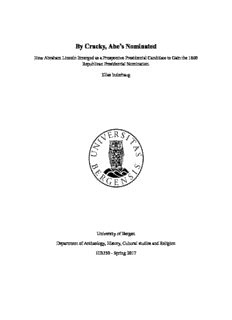
By Cracky, Abe's Nominated

Ungleichheit Warum wir nicht alle gleich viel haben müssen

Upgrade, Renovation, & Add

Bon Dia Aruba (4 Januari 2006)
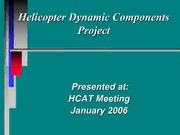
DTIC ADA599379: Helicopter Dynamic Components Project

Greek Government Gazette: Part 7, 2006 no. 831
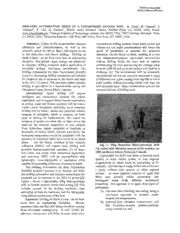
NASA Technical Reports Server (NTRS) 20060026170: Drilling Automation Tests At A Lunar/Mars Analog Site

The Legend of the siete infantes de Lara : Refundición toledana de la crónica de 1344 version

The Haunting Of Whaley House

The Medway Festival Fringe 2006 Program

Changes in the Living Arrangements of the Elderly
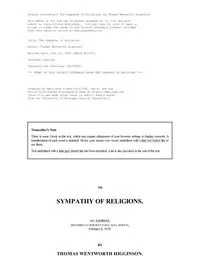
The Sympathy of Religions by Thomas Wentworth Higginson

